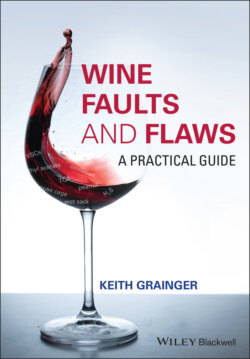Читать книгу Wine Faults and Flaws - Keith Grainger - Страница 23
1.9 Consumer Rejection Thresholds (CRTs)
ОглавлениеThere is often a marked difference between the concentration of a compound at which a consumer may be able to perceive a fault – the consumer detection threshold (CDT), and the level that would lead them to reject the wine – the consumer rejection threshold (CRT). With all consumer goods, the buyer is often prepared to accept minor blemishes and performance idiosyncrasies as long as the goods remain fit for purpose – in the case of wine, the consumer may accept it as fit for purpose as long as it is drinkable and has an element of enjoyment. Of course, consumers frequently reject wines that are simply not to their taste, or are of general low quality, and are often confused as to whether an individual aroma or taste characteristic should, or should not, be present. Visible faults such as hazes and the aforementioned tartrate crystals are very likely to lead to rejection, and on occasions sound wines may be rejected simply due to careless or inappropriate handling. Mature red wines very often throw sediment in the bottle which, in the absence of decanting, may become suspended in the wine or fall to the bottom of the glass when the wine is poured.
